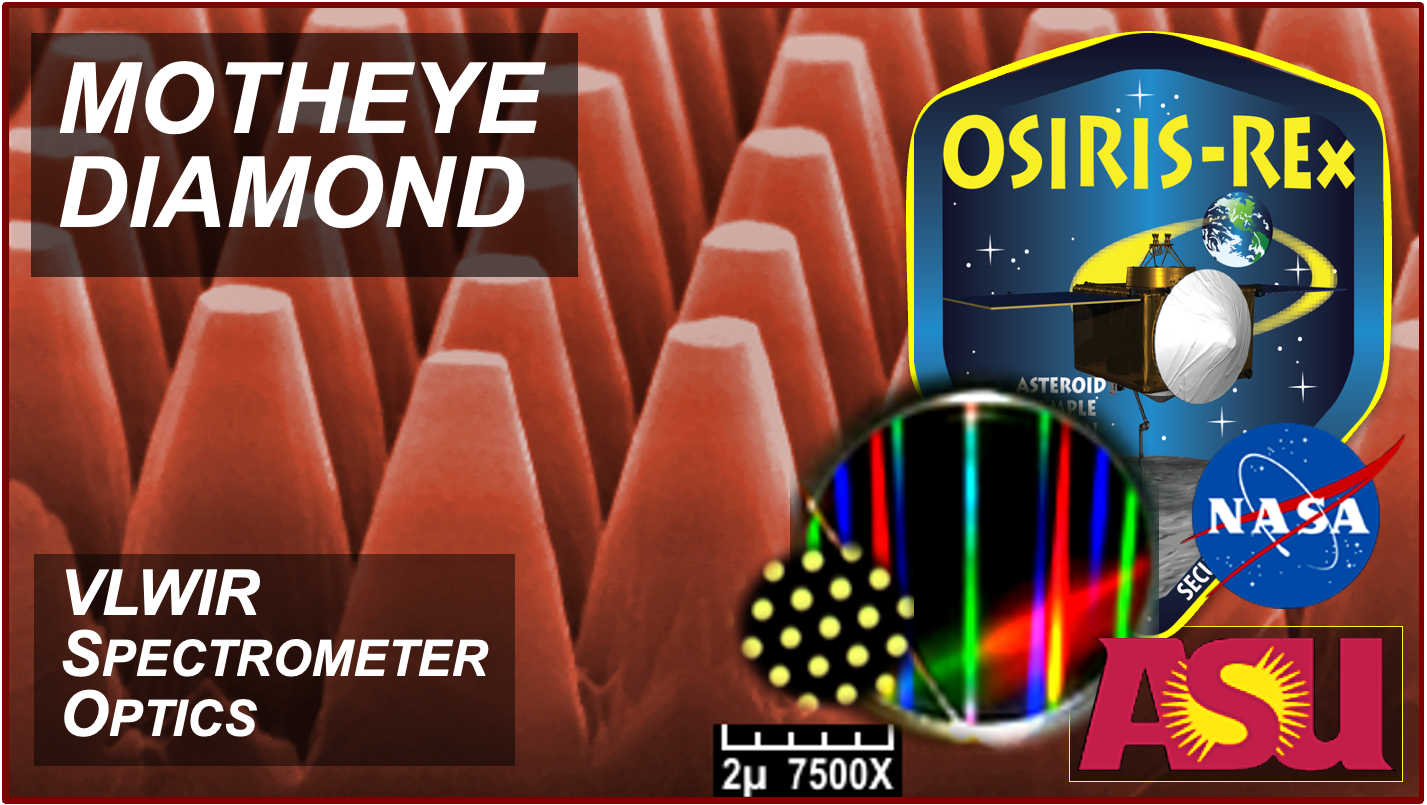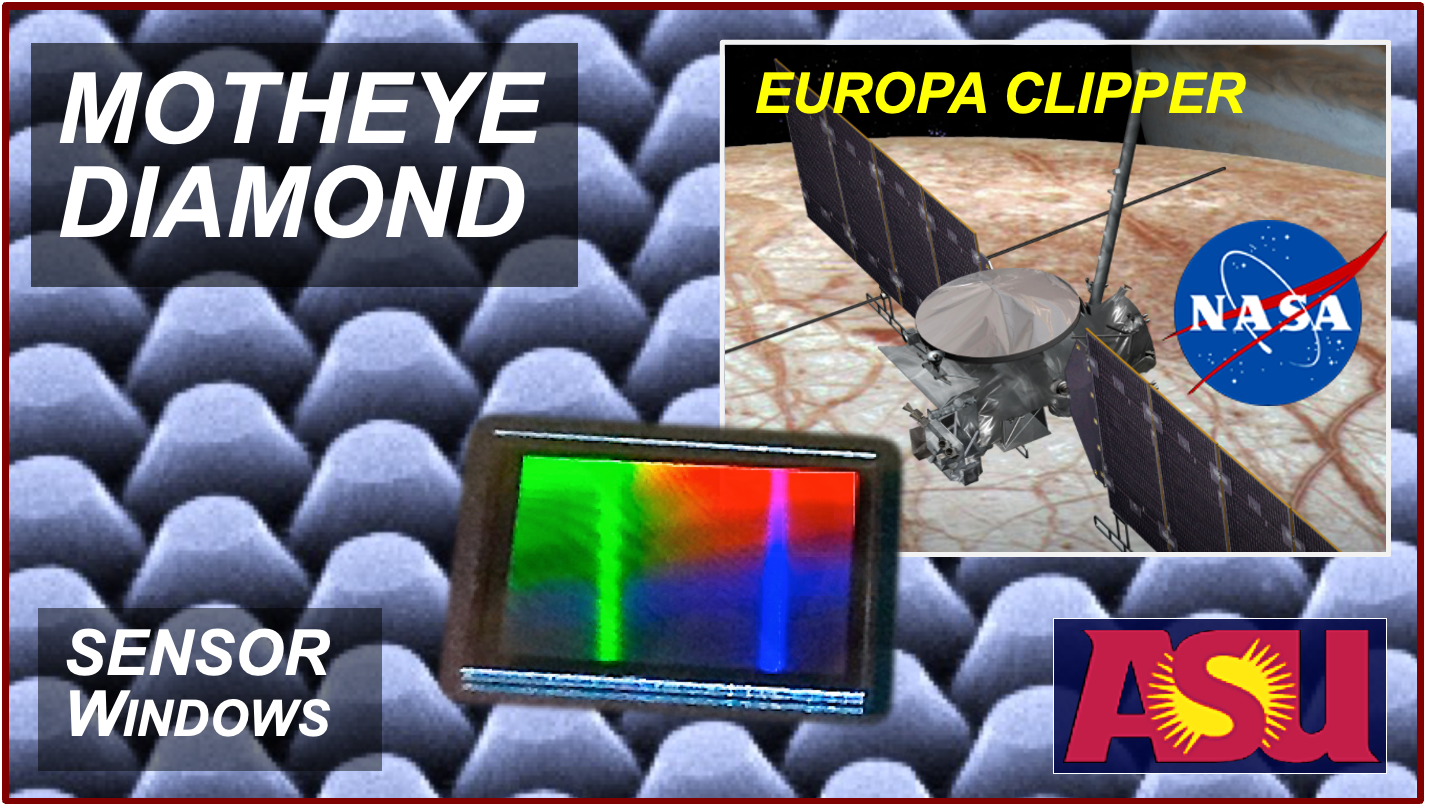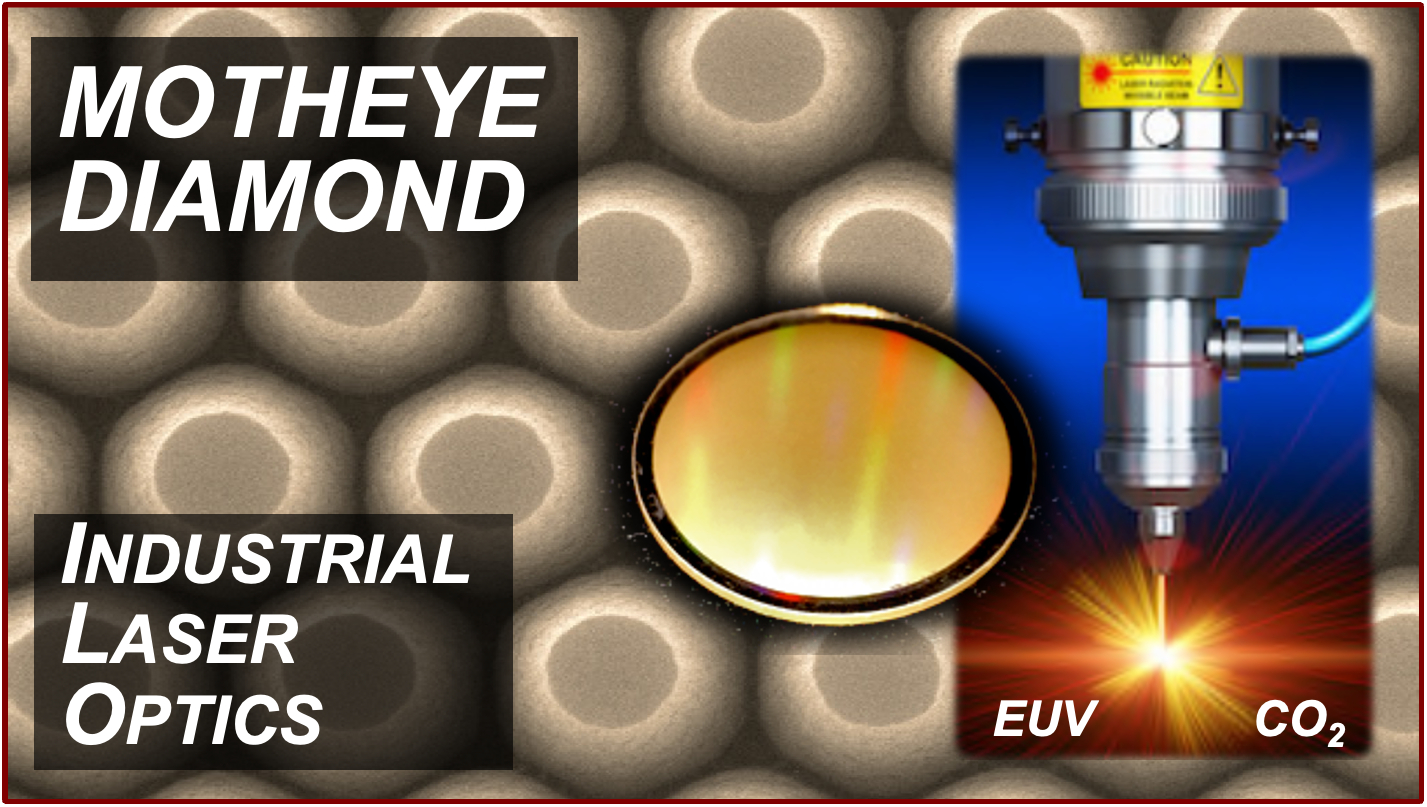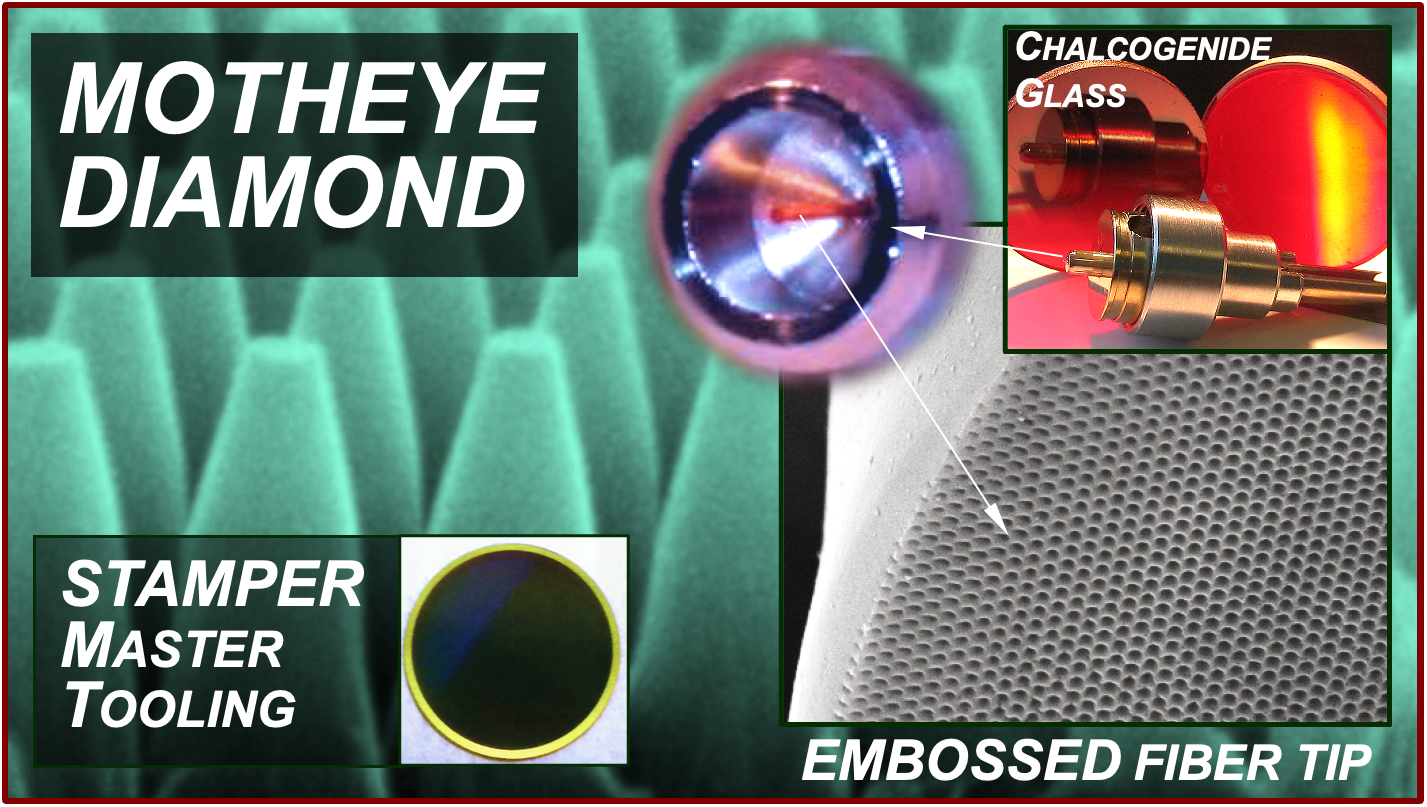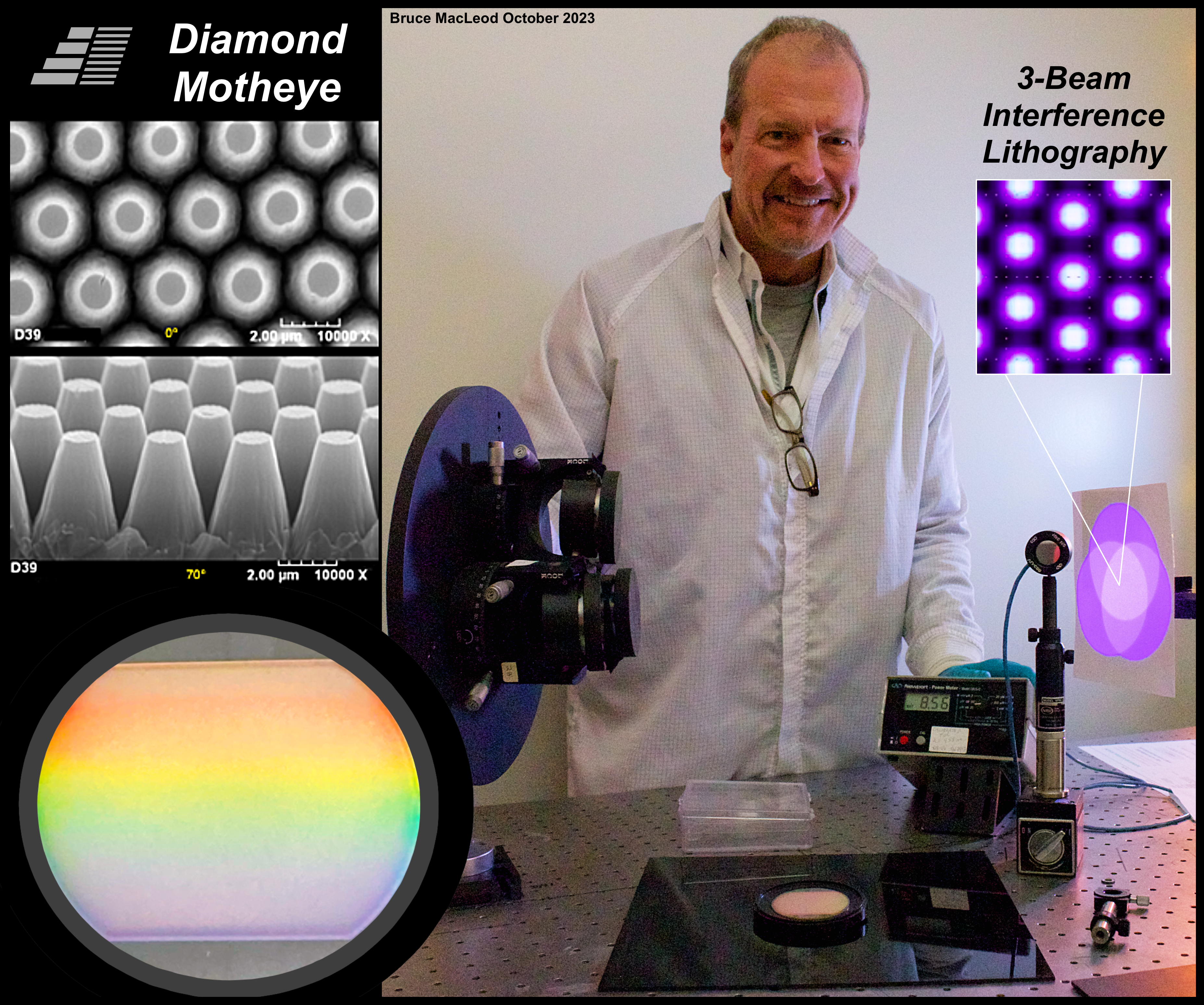
TelAztec’s Motheye nano-texture delivers unprecedented LWIR transmission gains in CVD diamond optical components. Fabrication of Motheye in diamond is a two-step process, first TelAztec’s 3-beam laser interference process with a violet laser defines a micro-scale hexagonal grid pattern on the surface of the optic, followed by a reactive ion plasma etch step to transfer the pattern into the surface of the optic. The Motheye pattern is derived from the eye of the nocturnal moth and provides excellent optical performance and all of the same single-material benefits as TelAztec’s Random Anti-Reflection (RAR) nano-texture, the major difference being that the Motheye pattern is periodic. A distinctive advantage of the hexagonal grid pattern is that it enables very deep etching, which directly correlates to excellent transmission at longer wavelengths. The data plot below demonstrates exceptional transmission from 7 to 25 microns, but performance can be tuned to extend out to 50 or even 100 microns depending on the application.
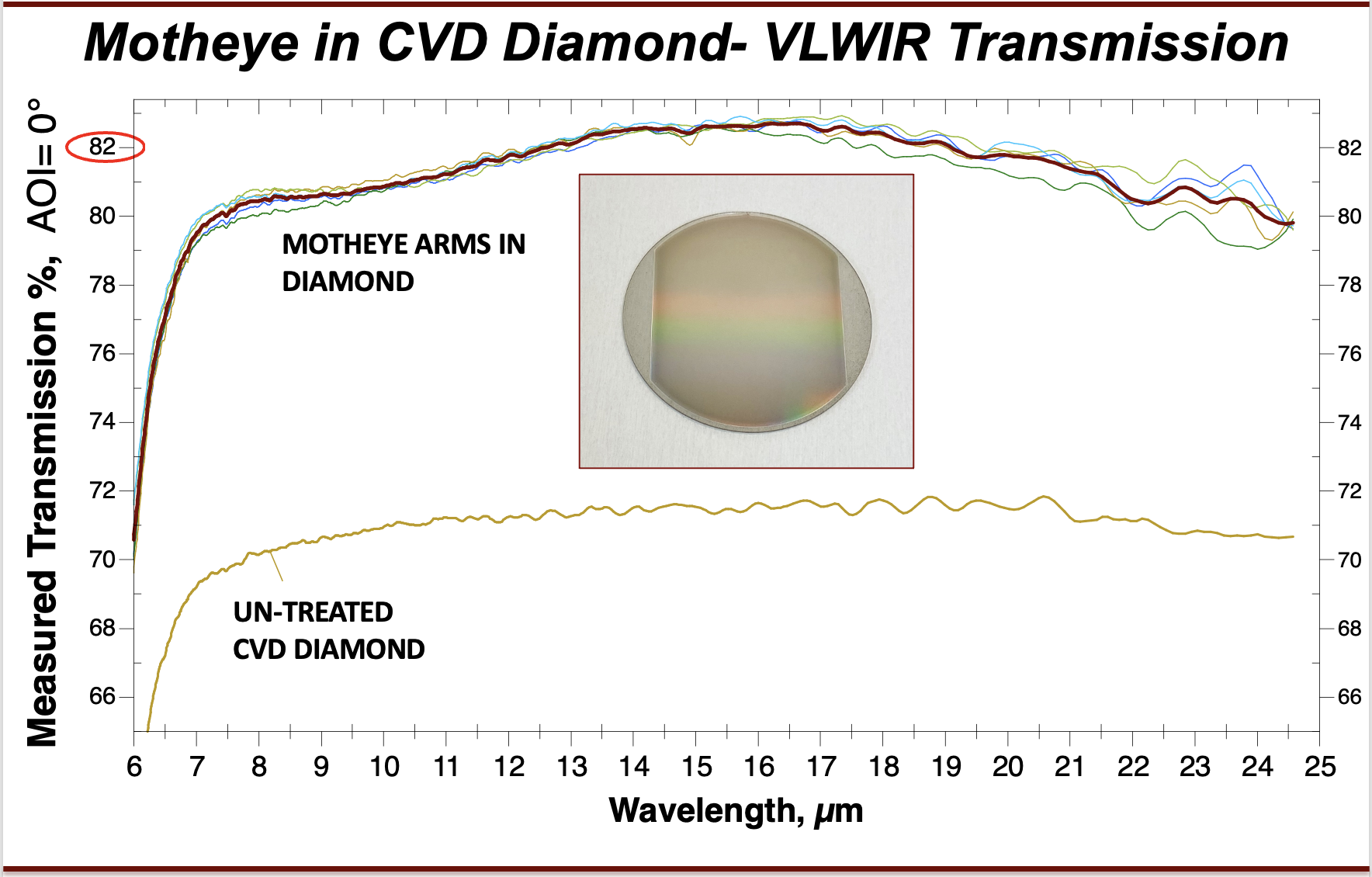
Much like TelAztec’s RAR nano-texture and unlike thin-film anti-reflective coatings, the Motheye texture is not comprised of dissimilar materials on the optic surface, ensuring durability comparable to the bulk diamond material. This characteristic significantly reduces the risk of performance degradation or failure in harsh environments such as space-based applications, where solar radiation, extreme temperature cycling, and ultra-high vacuum are nominal operating conditions.
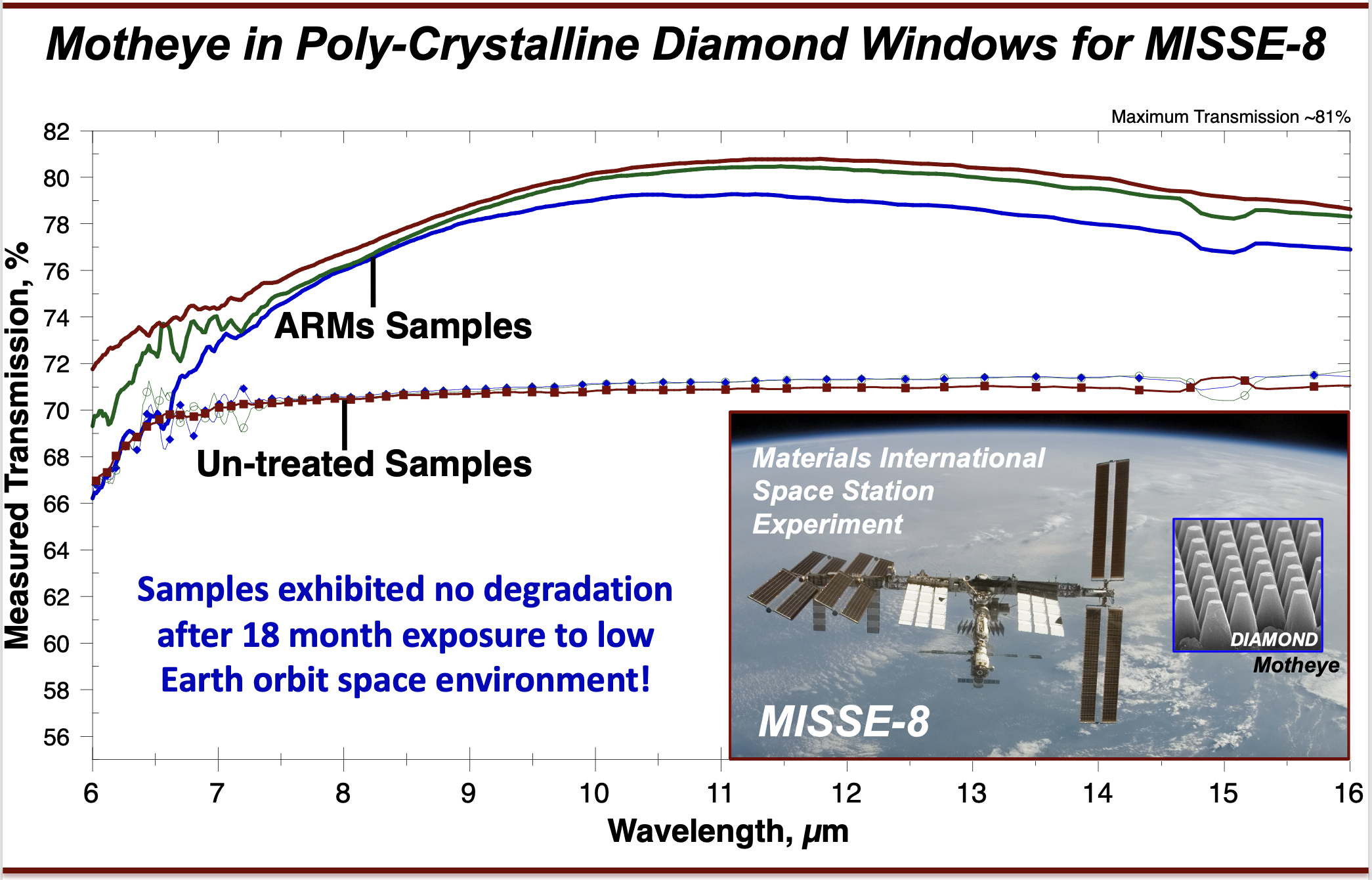
As an initial evaluation for space-based applications, nano-textured diamond optics were included in the NASA Materials International Space Station Experiment, or MISSE-8. The MISSE-8 engineers mounted test samples on an external platform outside the International Space Station to test the performance and durability of materials and devices in low earth orbit space environment. The objective of the mission was to identify durable materials that could be used in advanced reusable launch systems. The nano-textured diamond showed no degradation with over 18 months of exposure outside the space station.
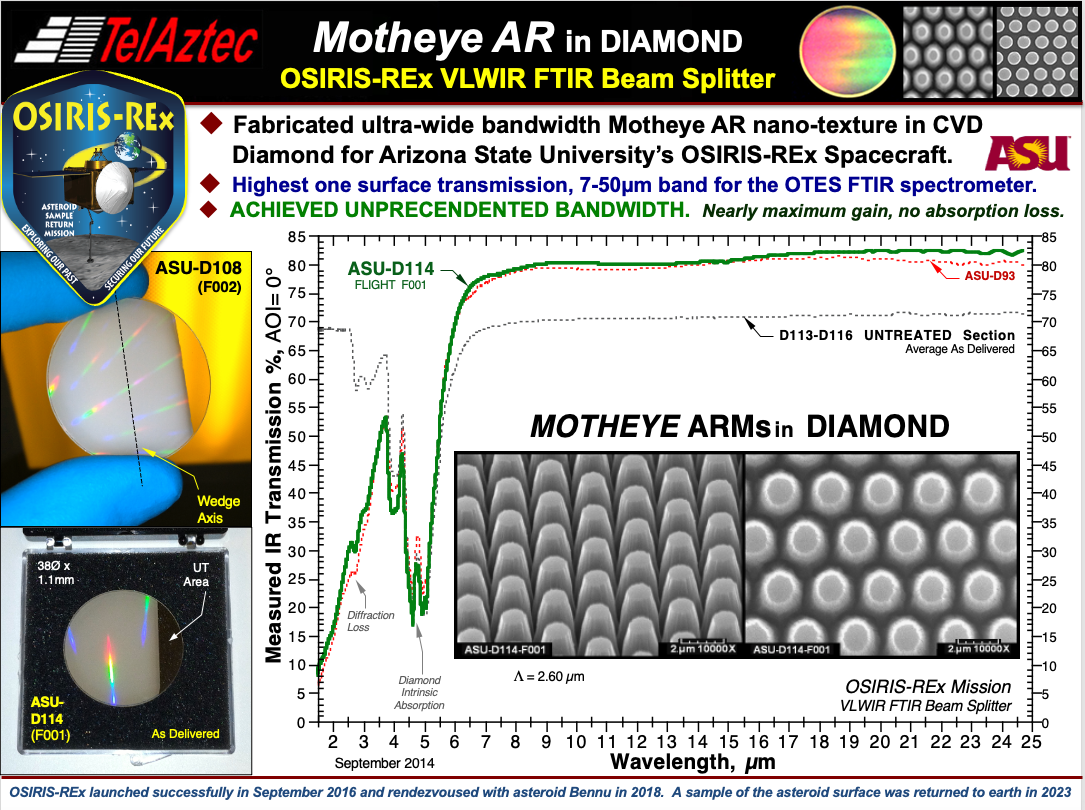
TelAztec’s Motheye nano-texture has already played a critical role in NASA’s space exploration, providing extreme broadband anti-reflection performance for diamond optics within the Optical Thermal Emission Spectrometer (OTES) on board the OSIRIS-REx spacecraft. This instrument was vital in collecting far-infrared spectral data from the asteroid Bennu, offering valuable insights into its mineral composition and temperature. The success of the OSIRIS-REx mission, the first U.S. spacecraft to collect and deliver a sample from an asteroid to Earth in September 2023, underscores TelAztec’s innovation as a valuable component of space research technology. Similar nano-textured optics have been integrated into optical systems for other NASA projects, including the 2021 Lucy mission to Jupiter’s Trojan asteroids, and the 2024 Europa Clipper mission to explore Europa, an icebound moon of Jupiter that may hold conditions suitable for life.
